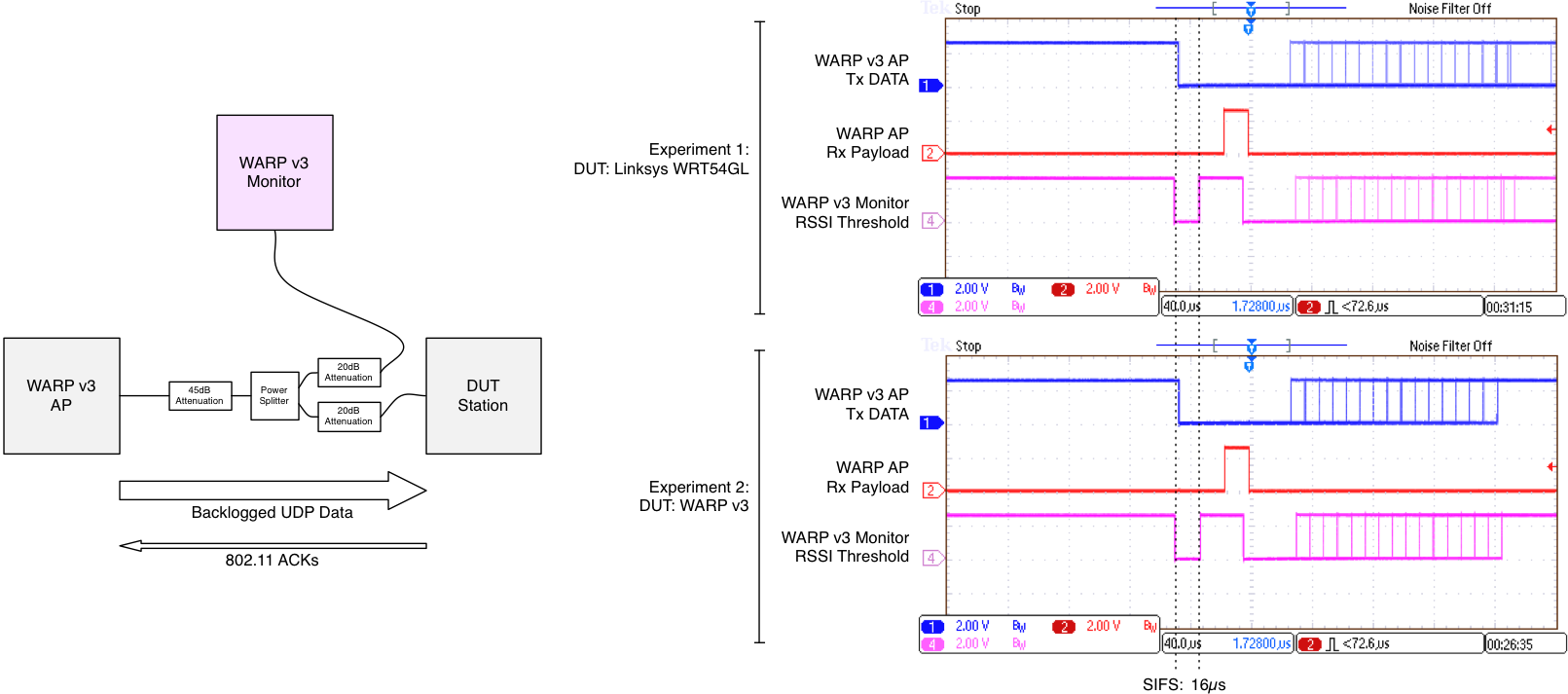| Version 3 (modified by chunter, 10 years ago) (diff) |
|---|
The 802.11 Reference Design and its documentation are under active development by the Mango team. The current release should be considered a beta- updates with bug fixes, API changes, new features and other refinements will be posted frequently. Please check the downloads page for the latest updates and post any questions about the design to the forums.
IFS Calibration and Benchmarks
Honoring the interframe spacings (IFS) of 802.11 is fundamental to the interaction of different 802.11 devices in a shared wireless medium. For this reason, we have thoroughly calibrated and characterized the IFS values of the 802.11 Reference Design. For a comparison baseline, we have also characterized a Linksys WRT54GL running the Tomato firmware.
SIFS
The Short Interframe Space defines the gap in time between:
- A data frame and its corresponding ACK
- An RTS and CTS
The 802.11 standard defines this gap in time from the perspective of a third party observing the medium -- it is the idle period between the last sample of energy from one packet to the first sample of energy to the next. To test our implementation's understanding of the SIFS interval, we have constructed an experiment using RF cabling, an RF power splitter, and RF attenuators. A WARP AP sends a data packet to the device under test (DUT) and the DUT is responsible for sending an ACK of that packet. A second WARP node, called the "monitor," observes the transaction and outputs a signal to an oscilloscope that corresponds to RSSI crossing a threshold. This signal basically shows whether the medium is busy or idle.

|
| Comparison of SIFS interval with commercial 802.11 device |
The above figure shows the monitor's thresholded RSSI signal in addition to signals from the perspective of the WARP AP that correspond to the PHY's start of TX processing and RX processing. The WARP implementation of 802.11 adheres to the standard's specification of a SIFS interval of 16µs.
DIFS / Slot

|
| Comparison of DIFS interval and slot time with commercial 802.11 device |